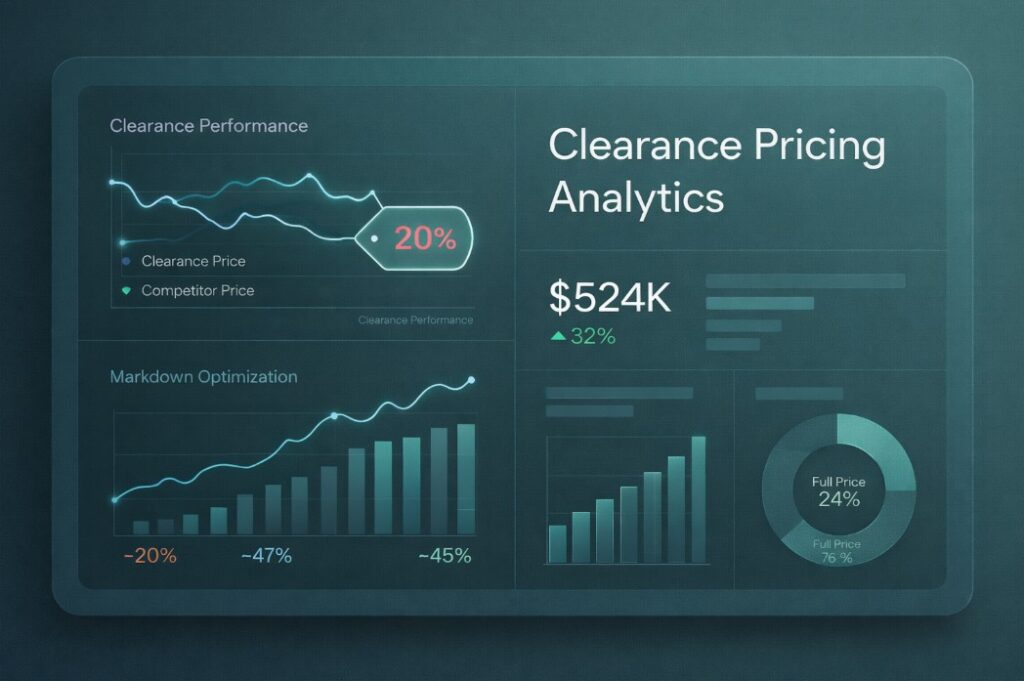- Product
- Solution for
For Your Industry
- Plans & Pricing
- Company
- Resources
For Your Industry
In today’s dynamic market, retailers are constantly looking for ways to optimize their pricing strategies. Two popular approaches are real-time pricing and price segmentation (often referred to as price discrimination). While they might sound similar, there’s a key distinction between them.
Imagine a price tag that constantly adjusts itself. That’s the essence of real-time pricing. Prices fluctuate based on factors like demand, competitor activity, and even the time of day. Think of a concert ticket that gets more expensive as the event approaches, or a hotel room that adjusts its rate depending on how booked the venue is. Real-time pricing allows businesses to stay competitive and maximize revenue during peak periods.
The Algorithmic Advantage:
Real-time pricing thrives on sophisticated algorithms that analyze vast amounts of data. These algorithms consider everything from historical sales trends to competitor pricing and current market conditions. This data allows businesses to anticipate fluctuations in demand and adjust prices accordingly. For instance, an online retailer might use real-time pricing to offer flash sales when inventory levels get high, or temporarily increase prices on popular items during peak shopping seasons like holidays.
Example: The Case of the Dynamic Ride
Ride-sharing services like Uber and Lyft are prime examples of real-time pricing in action. During rush hour or on weekends when demand for rides is high, the app will automatically adjust fares, sometimes significantly. This can frustrate riders who aren’t expecting the surge pricing, but it also allows the companies to incentivize drivers to work during peak periods and ensure enough vehicles are available to meet demand.

Price segmentation involves grouping customers based on specific characteristics like demographics or buying habits. Businesses then offer different prices to each segment. For example, a movie theater might charge a lower price for matinee tickets aimed at students and retirees, while offering premium rates for weekend evenings. This strategy helps businesses capture more value from their customer base by catering to their willingness to pay.
Beyond Demographics: A Multifaceted Approach
Price segmentation goes beyond simple demographics. Businesses can segment customers based on factors like purchase history, loyalty program membership, and even browsing behavior. Imagine an online clothing store offering discounts to frequent buyers or sending personalized promotions based on items a customer has viewed previously. This level of personalization allows businesses to create targeted pricing strategies that resonate with specific customer segments.
Example: The Streaming Service Shuffle
Streaming services like Netflix and Hulu often employ price segmentation. They might offer a basic tier with limited content at a lower price point, a mid-tier with additional features like HD streaming, and a premium tier with access to exclusive content and simultaneous streaming on multiple devices. This allows them to cater to different budget constraints and viewing habits, attracting both price-conscious consumers and those willing to pay more for a premium experience.
The crucial difference lies in what factors determine the price variations. Real-time pricing focuses on the broader market trends, while price segmentation tailors prices to specific customer groups.
Choosing the Right Strategy
The ideal approach depends on your business goals and industry. Real-time pricing works well for products with fluctuating demand, like airline tickets and perishable goods. Price segmentation is effective for businesses with diverse customer profiles, such as streaming services or retailers with a wide range of products. Some businesses might even choose to combine both strategies, leveraging real-time adjustments within pre-defined customer segments.
Understanding the distinction between real-time pricing and price segmentation empowers you to make informed decisions about your pricing strategy. By considering both approaches, you can ensure your products remain competitive and reach the right customers at the right price. Remember, a well-crafted pricing strategy isn’t just about maximizing profits; it’s about creating value for your customers and building long-term loyalty.













Missing an important marketplace?
Send us your request to add it!